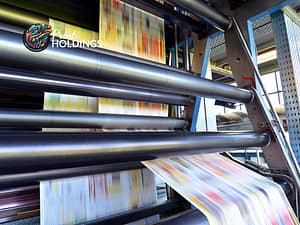Regular use of safety equipment in the workplace is vital for preventing injuries and ensuring the well-being of employees. Safety gear, from helmets and goggles to protective clothing, plays a critical role in shielding workers from various hazards. Its consistent use not only minimizes the risk of accidents but also fosters a culture of safety, reinforcing the importance of health and safety standards in the workplace.
Overview of Common Workplace Hazards
Workplace hazards vary widely depending on the industry and work environment. These can include physical hazards like falling objects, electrical risks, exposure to harmful substances, and ergonomic challenges. Understanding these hazards is the first step in developing effective safety protocols and choosing appropriate safety equipment to mitigate risks.
Identifying Essential Safety Equipment for Different Work Environments
Assessing Safety Needs Based on Workplace Risks
The process of identifying essential safety equipment begins with a thorough risk assessment. This assessment should consider the specific tasks performed, the nature of the work environment, and the potential hazards present. For instance, construction sites may require hard hats and safety harnesses, while laboratory settings might need chemical-resistant gloves and eye protection.
Tailoring Safety Equipment to Specific Job Roles
Safety equipment should be tailored to the specific needs of different job roles within an organization. A worker operating heavy machinery will have different safety requirements compared to an employee working in an office setting. Customizing safety gear to fit the demands of each role not only ensures better protection but also increases the likelihood of compliance by employees.
Strategies for Encouraging Regular Use of Safety Equipment
Creating a Safety-First Workplace Culture
Creating a safety-first culture is essential for encouraging the regular use of safety equipment. This involves leadership setting a clear example, recognizing and rewarding safe practices, and embedding safety as a core value within the organization. A strong safety culture motivates employees to prioritize their safety and the safety of their colleagues consistently.
Effective Communication and Training on Safety Equipment Use
Effective communication and training are key to ensuring that employees understand the importance of safety equipment and know how to use it properly. Regular training sessions, safety meetings, and clear, accessible information about safety protocols help reinforce the correct use of safety gear. Interactive and engaging training methods can increase employee awareness and adherence to safety practices.
Overcoming Challenges in Safety Equipment Adoption
Addressing Common Barriers to Using Safety Gear
One of the main barriers to using safety gear is discomfort or inconvenience. To address this, it’s crucial to select ergonomically designed equipment that is both comfortable and effective. Another barrier is a lack of awareness or understanding of the risks involved in not using safety equipment. Regular training and awareness programs can help overcome this by educating employees about the potential hazards and the importance of protective gear.
Solutions to Enhance Compliance and Comfort
To enhance compliance, involve employees in the selection process of safety gear, ensuring their feedback is considered, especially regarding comfort and fit. Regularly review and update safety equipment to incorporate newer, more comfortable, and efficient models. Additionally, ensure that all safety gear is easily accessible and properly maintained, so employees are more inclined to use it.
Best Practices for Safety Equipment Management
Organizing and Maintaining Safety Equipment
Effective organization and maintenance of safety equipment are key to ensuring its availability and reliability. This includes regular inspections for damage or wear, proper cleaning and storage, and timely replacement of outdated or worn-out gear. Establishing a dedicated area for storing safety equipment can help in keeping it organized and accessible.
Implementing Efficient Safety Gear Distribution Systems
Implement systems to efficiently distribute safety gear to employees. This might involve check-in and check-out systems for equipment, especially for items that are not used daily. Use tracking systems to monitor equipment usage and availability, ensuring that there are always enough supplies for all employees who need them.
Incorporating Safety Equipment in Routine Safety Drills
Role of Safety Equipment in Emergency Preparedness
Incorporating safety equipment into routine safety drills reinforces its importance in emergency preparedness. Drills should simulate realistic scenarios where employees can practice using safety gear in the context of potential workplace emergencies. This practice helps familiarize employees with the equipment and instills confidence in its use during actual emergencies.
Designing Drills to Reinforce the Use of Safety Gear
When designing safety drills, include specific objectives that focus on the correct use of safety equipment. For example, drills can involve scenarios where employees must quickly don protective gear correctly to respond to an emergency. Regular feedback and debrief sessions after drills can also help identify areas for improvement in safety equipment usage and handling.
Monitoring and Evaluating Safety Equipment Usage
Techniques for Tracking Compliance and Effectiveness
Monitoring and evaluating the usage of safety equipment is essential for ensuring workplace safety. Techniques for tracking compliance can include regular audits and inspections to ensure that employees are using the equipment properly. Surveys and feedback forms can also be used to gauge employee satisfaction with the safety gear and identify areas for improvement. Effectiveness can be measured by analyzing accident and incident reports to determine if the safety equipment is serving its intended purpose.
Continuous Improvement in Safety Equipment Practices
Continuous improvement in safety equipment practices involves regularly reviewing and updating safety protocols and equipment. This includes staying informed about advancements in safety technology and industry best practices, as well as seeking employee feedback to make necessary adjustments. Regular training refreshers and updates to safety guidelines help maintain a high standard of safety in the workplace.
Leveraging Technology to Enhance Safety Equipment Integration
Utilizing Digital Tools for Safety Management
Digital tools can significantly enhance the management and integration of safety equipment in the workplace. This can include using inventory management software to track equipment distribution and maintenance schedules. Wearable technology can also be used to monitor the use of safety equipment in real-time, providing valuable data for improving safety practices.
Innovations in Safety Equipment for Improved Usability
Innovations in safety equipment focus on improving usability and effectiveness. This may include the development of lighter, more comfortable materials, or smart safety equipment that can alert users to potential hazards. Technology such as augmented reality (AR) can also be used for training purposes, providing employees with realistic scenarios to practice using safety equipment.
Conclusion
Regular use of safety equipment has numerous benefits, including reducing the risk of injuries and fatalities, improving employee morale, and fostering a culture of safety. By prioritizing the use of safety equipment, businesses can ensure compliance with safety regulations and demonstrate their commitment to employee well-being.







